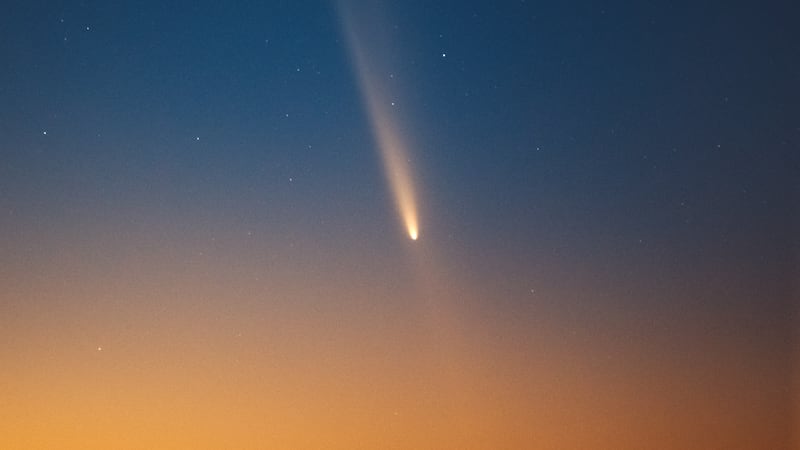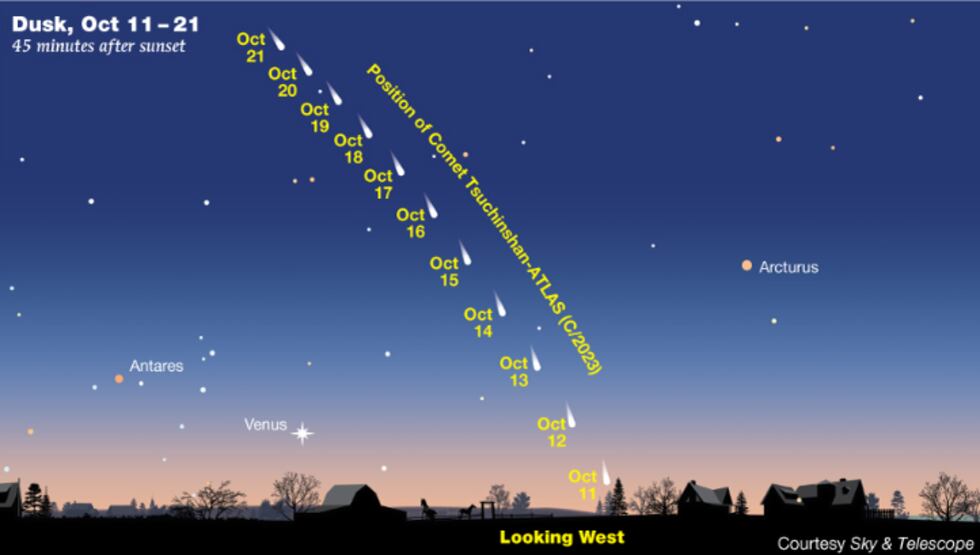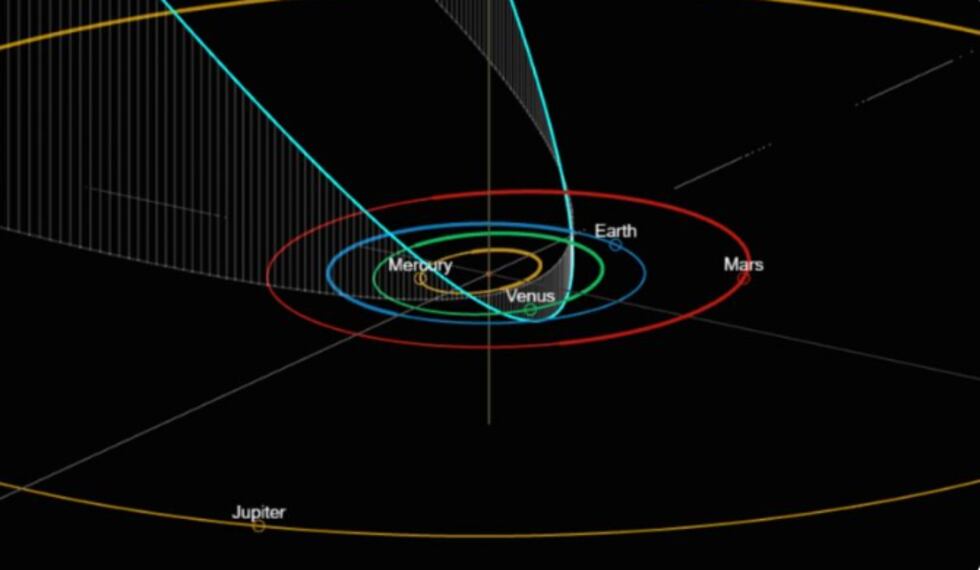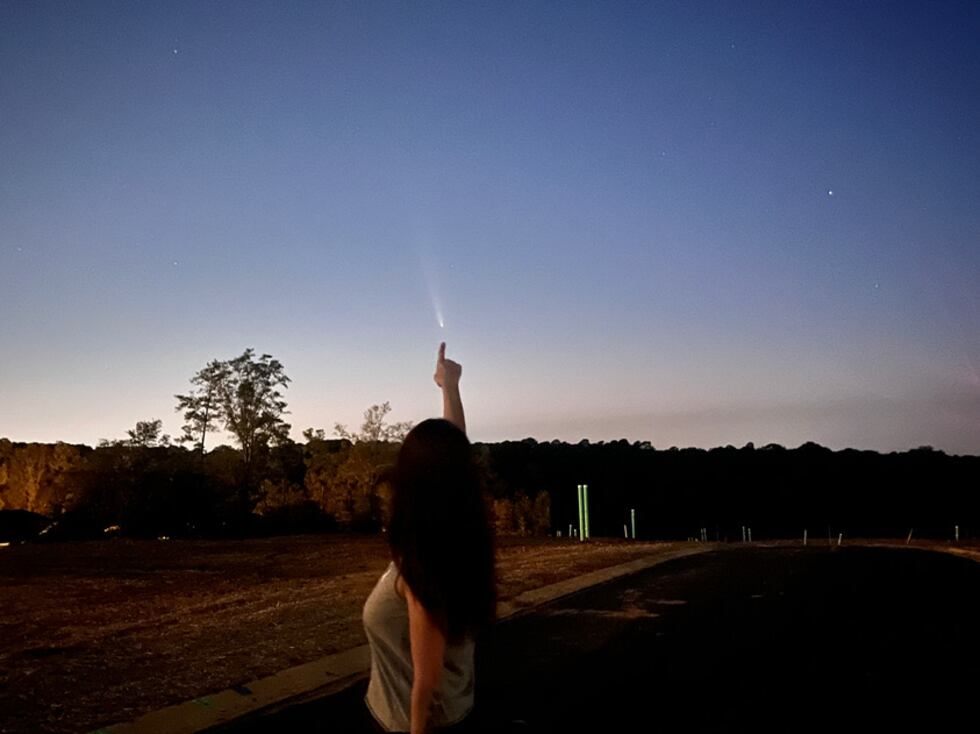Weather blog: Viewing Comet Tsuchinshan-ATLAS in the CSRA
How can you view the 80,000 year Comet C/2023 A3 also known as “Tsuchinchan-ATLAS”?

AUGUSTA, Ga. (WRDW/WAGT) - We haven’t had a visible comet over the CSRA since Comet NEOWISE in 2020. Critics are at ends on if NEOWISE was a “great” comet or not. “Great” comets are left to comets that are exceptionally bright and NEOWISE was right on the edge. The last time we had a “great” comet visible on Earth with the unaided eye was McNaught in 2007 and Lovejoy in 2011. These comets however were visible mainly in the Southern Hemisphere. The last great comet seen in the Northern Hemisphere for an extended period of time was Hale-Bopp in 1996-1997 - which was visible for an impressive 18 months. The comet visible this month is the brightest comet in 27 years and will remain visible until October 24th!
Tsuchinshan-ATLAS (C/2023 A3) | When was it first seen?
Comet C/2023 A3 (Tsuchinshan-ATLAS) or “Comet A3″ for short, was first discovered on February 22nd, 2023 by the Asteroid Terrestrial-impact Last Alert System (ATLAS) telescope project in South Africa according to the Minor Planet Center. Astronomers at the Purple Mountain Observatory in China also discovered the comet on January 9th - which is why both observatories are cited in the comet’s full name.
With an 80,000-year orbit around the sun (80,660 years to be exact), this is truly a once in a lifetime comet. According to EarthSky, it is estimated to be traveling between Saturn and Jupiter at a extremely fast pace of 180, 610 mph and made it’s closest approach to Earth October 12th when it was approximately 43.9 million miles away -- 180 times farther away than the moon. Tsuchinshan-ATLAS is a comet that can be seen by the untrained eye, but binoculars or some sort of optical aid will further enhance viewing opportunities. This comet is up 30-40 minutes after sunset and will be most visible the week of October 14th.
In this illustration, the turquoise line represents the path of A3 into the inner solar system. Its orbit around the sun is retrograde, meaning that the comet moves in the opposite direction to most major solar system planets. Its perihelion distance – closest point to the sun – came on September 27, 2024, when it was 0.39 astronomical units (AU, or Earth-sun distances) from our star. The comet is still being reported as visible by some astronomical observers so it appears to have survived the close encounter with our largest solar star. Richard Cofer caught this awesome picture below in Aiken, SC with a Nikon camera (no specified lens or model type).
If you don’t have binoculars no worries because a good camera is a great alternative to capture a few seconds long exposure image of the approximate area of the sky. Try this at different magnification or zoom settings and the comet’s nice tail should be revealed. According to Live Science, “a comet’s tail is made up of twin trails of dust and gas that are blown off the comet by solar radiation, meaning its tail always points away from the sun. Comet A3 is really special because it has a super rare anti-tail seeming to defy physics pointing towards the sun. Anti-tails are created by dust that has recently been left behind by the comet in its orbital plane around the sun. When Earth es through this plane, this residual debris is illuminated by the sun and reflects back to Earth, giving the impression of a second tail.” You can see Comet A3′s anti-tail here.
Checkout this awesome view of Tsuchinshan-ATLAS provided by Dave Dickinson from a solar telescope as it ed between the sun and Earth.
When are the best times to see Tsuchinshan-ATLAS (C/2023 A3)? | Checkout these charts.
The chart below shows what direction to look for Comet A3, which is in the western sky.

In the chart below you can see how Comet A3 will continue to rise in the sky over the next week and a half.

Tsuchinshan-ATLAS | Orbit and Local Pictures!

It is a great idea to take advantage of this once in a lifetime opportunity. Make sure you try to get a look at this “celestial firework” before it is totally gone. Be sure to check out this article by Kelly Kizer Whitt, Eddie Irizarry, and Deborah Byrd from EarthSky.org for more in-depth information on Comet C/2023 A3, also known as Tsuchinshan-ATLAS.



Copyright 2020 WRDW/WAGT. All rights reserved.














